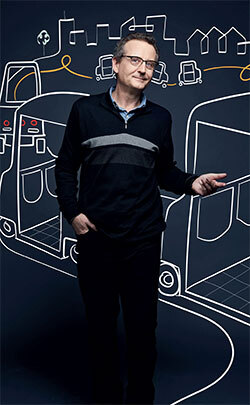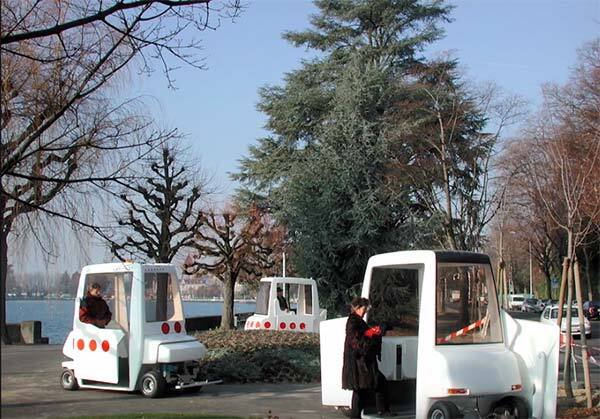Cybernetic transportation systems helping sustainable cities

Purchased on Istock.com. Copyright.

Mathias Glaus, professor in the Construction Engineering Department at ÉTS
Transportation in urban environments presents many challenges due to the complexity of meeting people’s needs as well as those involving merchandise and waste transportation. This requires looking beyond the dichotomy between conventional public transport and individual vehicles.
Mathias Glaus is an engineer and research professor in environmental engineering whose work focuses on setting up new modes of transport to address the complexity of cities. “Cybernetic transportation systems (smart road networks coupled with automated vehicle fleets and collective vehicle management) are a way to offer better mobility for both merchandise and people while also improving waste collection systems,” he explains.
Collective mobility tailored to individual needs through a network
Dr. Glaus’s vision includes cities where small – driverless – autonomous vehicles offer a non-stop, personalized, on-demand service, without intermediate transfers or stops, which would be based on sharing automated vehicles that operate through a network.
La Serpentine
After completing his engineering studies in Switzerland, Mathias Glaus had the opportunity to work with Bernard Saugy, inventor of la Serpentine, a system made up of a fleet of 4-seater autonomous vehicles equipped with wheel motors and inductively powered from live tracks embedded underneath the pavement, without direct contact with the vehicles. Combined with a system managing individual requests, vehicles circulate within a grid (personalized routes). Dr. Glaus believes that this mobility model is a key element in the development of urban environments because it encourages a complementary approach where different modes of transport are used to improve services available to the public.
Mathias Glaus takes a systemic view of mobility, based on the multifunctional nature of needs. He is especially interested in redirecting waste materials to various recycling and waste diversion sites located in a given area (one of the basic tenets of the circular economy) by including the idea of seeking solutions adapted to different urban contexts (density, clientele, opportunities).

A land-use planning tool
Flexible, adaptable and centred on a wide range of local mobility needs (door-to-door), the Serpentine system facilitates urban planning based on greater diversification of land use. Thus, developing multifunctionality and local, multimodal mobility in cities, based on a varied and dynamic service offer, sets an urban context where individual needs can be addressed in time and space.



